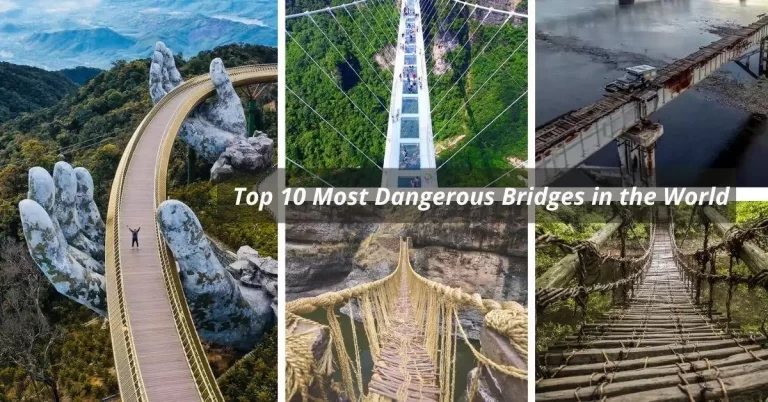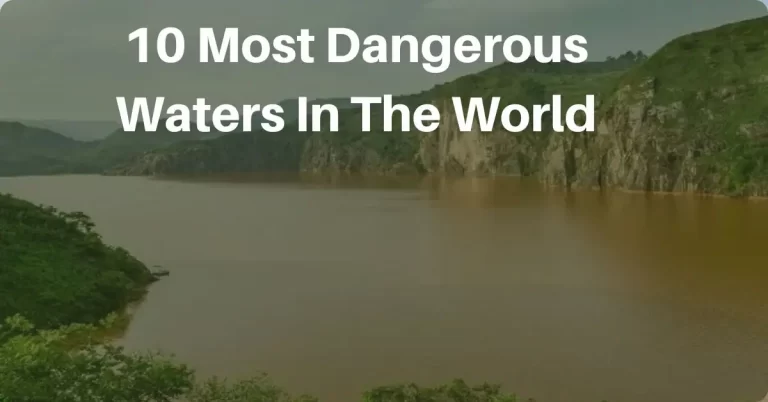The 10 Deepest Parts of the Ocean
How many mysteries are buried within the oceans? These oceans, covering 71% of the Earth’s surface, hold 1.35 billion cubic kilometers (324 million cubic miles) of water. If we explore these oceans, then we will find something new every time in their depths. The passion to explore the earth has been within humans since the beginning. This is the reason that he has reached the highest peak to the depth of the sea.
Although exploration continues on Earth today, there are parts of Earth that are still difficult for human civilization to fully explore. Due to this, we will talk about the 10 deepest parts of the ocean, which to date humans have not been able to fully explore them.
.
List of the Deepest Parts of the Ocean
1. Mariana Trench
Location: Western Pacific Ocean
Depth: 36,070 ft (10,994 meters)

The Mariana Trench placed withinside the Western Pacific Ocean is the deepest oceanic trench on Earth. It is located 200 km east of the Mariana Islands in the western Pacific Ocean. The deepest part of the ocean is found in the Mariana Trench. The shape of these trenches is like a crescent moon. It is about 2550 km long and 69 km wide
The climate around the Mariana Trench is quite different. Here liquid sulfur, carbon dioxide, and active alkaline mod come out of the trench. Surprisingly, the marine life found here can survive even under a pressure 1000 times higher than that found on the sea level. The Mariana trench’s deepest point is called Challenger Deep.
The Mariana Trench is a small valley located south of the Mariana Islands. Here the depth from the sea surface to the deepest point has been measured as 10,994 meters. Today, if we look at the highest point in the world, we find that thousands of climbers have successfully climbed Mount Everest. But on the contrary, in history, we find only 3 people who have stepped on the deepest part of the earth.
It is believed that even if Mount Everest is put in it to measure the depth of the Mariana Trench, the peak of this mountain will be 1.6 kilometers below sea level. Perhaps this is the reason why it is easier for people to climb Mount Everest than to go to the deepest point in the ocean. The Mariana Trench is a part of a global network of deep troughs that cut across the sea floor.
The Mariana Trench was formed when two tectonic plates collided. In such a situation, one plate of Earth’s metal climbed on top of the other at the collision point, which created an ocean trench. The Mariana Trench was first discovered in 1875 by H.M.S. Challenger. Several attempts were made to find its depth. Then in 1960, a deep boat named Bathyscaphe Trieste reached Challenger Deep.
The density of water at the surface of the Mariana Trench increases by 4.96%. However, there have been indications of marine life even at such high pressure in the operations carried out several times. The bottom of the Mariana Trench has seen the presence of large fauna such as flatfish, large shrimp, and giant crustaceans.
.
2. Tonga Trench
Location: Southwest Pacific Ocean
Depth: 35,702 feet (10,882 meters)

The second name of the deepest part of the ocean is the Tonga Trench. The Tonga trench in the southwest Pacific Ocean is the deepest hole in Southern Hampshire. If we talk about its deepest point then there is mention of Horizon Deep, which is present at the northern end of the Kermadec-Tonga subduction zone. The Tonga Trench is 10,882 meters deep at Horizon Deep.
Located 2500 kilometers away in the North East Sea of the North Island of New Zealand, the formation of this trench has happened in a very interesting way. Actually, the formation of the Tonga Trench was due to the subduction of the Pacific Plate from the Tonga Trench. Researchers in the study also found that the movement of this plate gives rise to large volcanoes in the Japan trench.
When Marine Scientists take stock of Deep Horizon, they find that many diverse species are found in this area. The Apollo 13 mission was terminated here in 1970 after an oxygen tank exploded.
Let us tell you that the radioisotope thermoelectric generator was also included in the Apollo 13 mission to the moon, but due to failure, it broke into the atmosphere and near the Tonga Trench. The heat started coming out of it. In such a situation it was thrown into the South West Pacific.
Explain that the radioisotope thermoelectric generator contained 3.9 kg of plutonium 238. Atmospheric and oceanic monitoring today indicates that nuclear fuel has not been released from this debris. That’s why radio will continue to be active there for thousands of years.
.
3. Philippine Trench
Location: East of the Philippines
Depth: 34,580 feet (10,540 meters)

The 3rd trench in the world is known as the Philippine Trench. Galathea Depth is the deepest point of this trench at 10,540 meters. The length of this trench is 1320 km while the width is 30 km. It is also believed that if Mount Everest is inserted into the deepest point of this trench, Everest with a height of 8840 meters will easily disappear in its trench.
Research suggests that the atmospheric pressure is found to be around 1050 in Galathea depth and despite this much pressure, biological life is found at such depth. The world’s largest deposit of deuterium is found three miles deep in the Philippine Trench. Deuterium is actually a type of heavy hydrogen that can be used as a non-polluting source of energy.
The Philippine Trench begins east of Luzon island in the Philippines and ends near Halmahera in Malko Island, Indonesia. If we talk about the formation of this trench, then it was formed due to the collision of the Eurasian Plate and the Philippines Plate. If we talk about the Philippine sea, then apart from the Philippine Trench, there are other trenches present in it. Where flourishing marine life is found.
Until the 1970s, the Philippine trench was considered the deepest place in the world. Then the discovery of the Mariana trench and Tonga trench brought it to third place in the depth list. According to scientists, the Philippine Trench is not very old and it was formed 8 to 9 million years ago.
.
4. Izu-Ogasawara Trench
Location: Western Pacific Ocean
Depth: 32,086 feet (9,780 meters)
The depth of the Izu-Ogasawara trench present in the Western Pacific Ocean is 9780 meters. This trench, known as the Izu-Ogasawara trench, is also known as the Izu-Bonin trench. If we talk about the spread of this trench, it starts from Japan and touches the northern section of Mariana. Depend Point is said to have formed when the Pacific Plate subducted from the Philippine Sea, forming Iju Island and Bonin Island.
.
5. Kuril-Kamchata Trench
Location: Northwest Pacific Ocean
Depth: 34, 587 feet (10,542 meters)
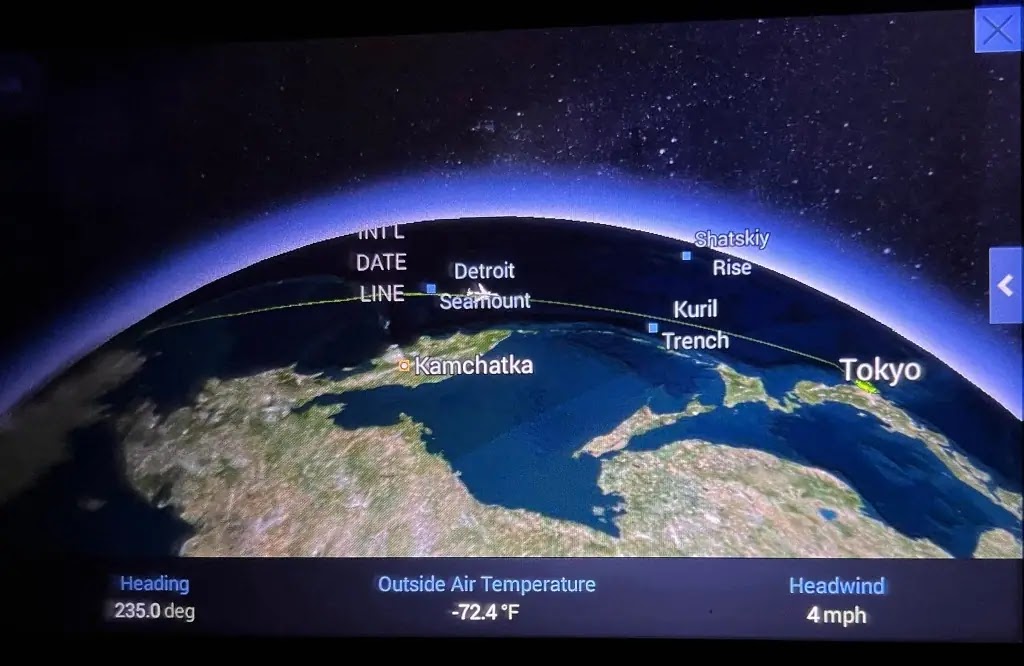
The Kuril-Kamchatka Trench is one of the deep ocean trenches found in the Northwest Pacific Ocean. This trench starts from the southeast coast of Kamchatka and meets Hokkaido in Japan in the east. This trench is believed to have formed in the late Cretaceous, from which the Kuril Island Arc and the Volcanic Arc were also formed.
Let us tell you that there have been many earthquakes in this area in recent decades and it is a sensitive area. Its maximum depth is 10,542 meters.
.
6. Japan Trench
Location: Northern Pacific Ocean
Depth: 26,398 feet (8,046 meters)

This trench known as the Japan trench is part of the Pacific Ring of Fire. This trench extends from the Northern Pacific Ocean to North East Japan. If we talk about its depth, then it is 8,046 meters deep. It is believed that this trench was formed when the Pacific Plate moved under the continental Okhotsk Plate. Both these plates make the trench quite unstable.
There is movement in these plates on a daily basis, due to which there is a possibility of earthquakes in the surrounding areas. The Japan Trench is also continuously stirred by the coming tsunami and earthquakes.
.
7. Puerto Rico Trench
Location: Between the Caribbean Sea and the Atlantic Ocean
Depth: 26,398 feet (8,046 meters)
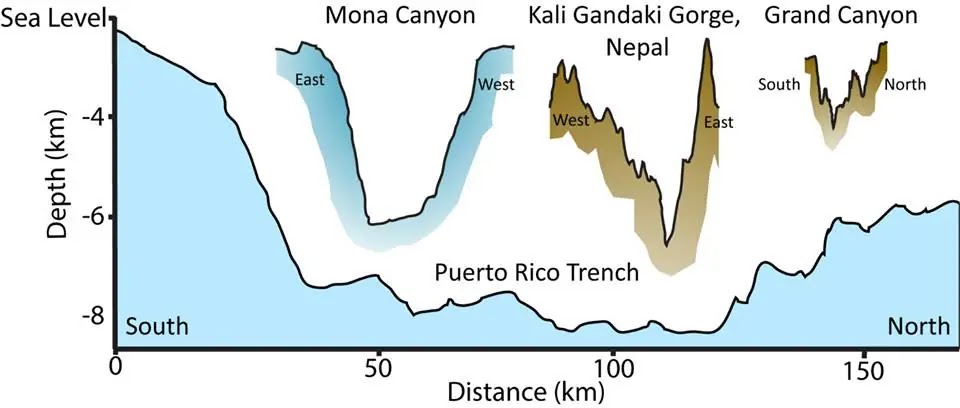
The Puerto Rico trench located on the border between the Caribbean Sea and the Atlantic Ocean is often heard in the news. This trench, 8648 meters deep is often called the Earthquake Zone. There are a lot of earthquakes in this area and this can generate a significant tsunami.
This trench is 800 km long and its deepest point is called Milwaukee Deep. and this is the deepest point in the Atlantic Ocean. If we look at the history of the Puerto Rico trench, we find that once a lot of garbage was also disposed of in this trench, due to which its marine life was also badly affected.
.
8. South Sandwich Trench
Location: South Atlantic Ocean
Depth: 27,717 feet (8,448 meters)
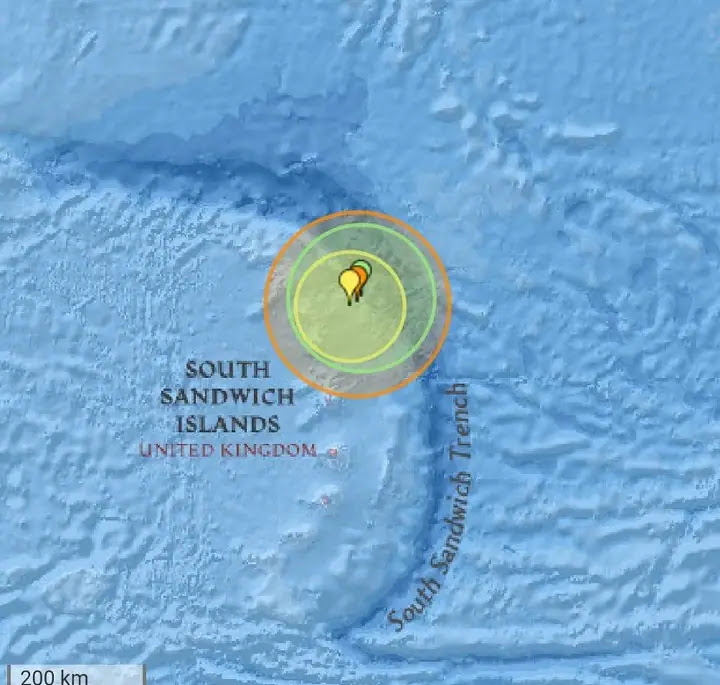
The depth of this South Sandwich trench present in the South Atlantic Ocean is 8,448 meters. If attention is paid to its formation, then it is made of subduction like a common trench. It was formed by the subduction of the South Sandwich Plate of the South American Plate.
South Sandwich Island lies near the South Sandwich trench, in which the volcanic island arc is formed. Explain that this volcanic arc originates from the active volcanoes of Mount Belinda and Montagu Island.
.
9. Peru–Chile Trench
Location: Eastern Pacific Ocean
Depth: 26,460 Feet (8,065 meters)
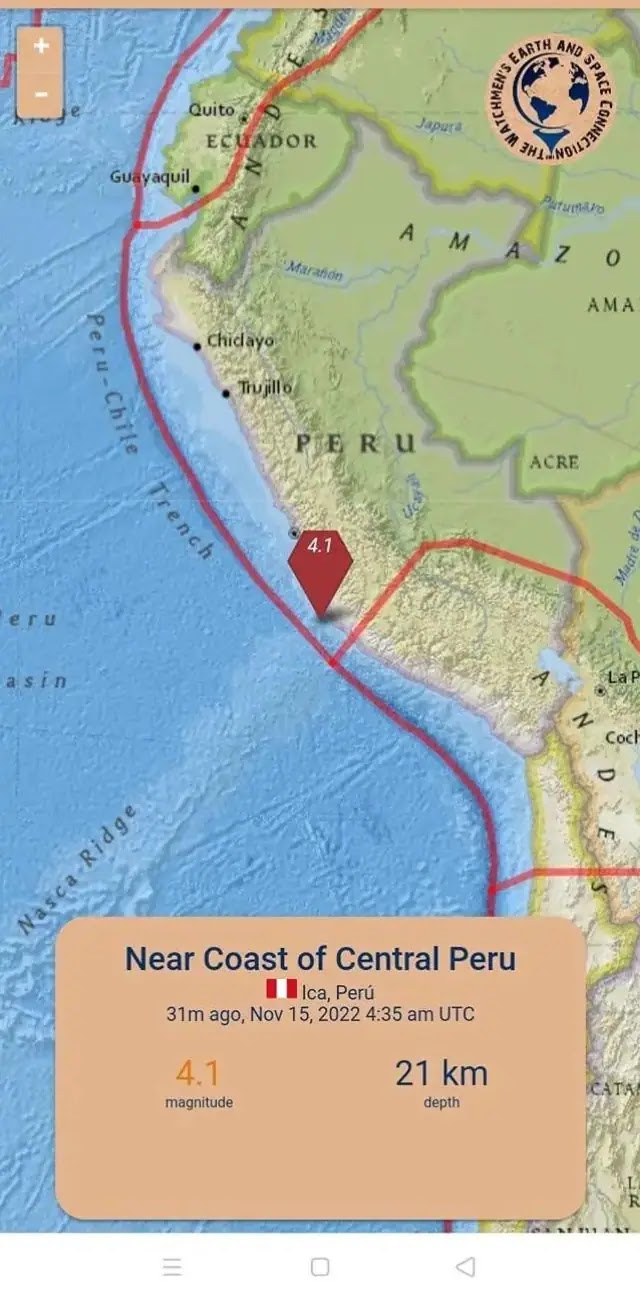
Peru–Chile trench is also known by the name of the Atacama trench. Located in the Eastern Pacific Ocean, about 160 km off the coast of Peru and Chile. this trench is 5900 km long, while it is 64 km in terms of width. This trench is spread over an area of 5,90,000 square kilometers.
The Peru–Chile trench is said to have been formed when the Nazca plate collided with the South American plate. The deepest point of the Atacama Trench is known as Richards Deep. Its maximum depth is 8065 meters.
.
10. Kermadec Trench
Location: South Pacific Ocean
Depth: 32,963 feet (10,047 meters)

The Kermadec trench at the bottom of the South Pacific Ocean is spread over 1000 km. If you look at its depth, it is 10,047 meters deep and is found from Louisville Seamount Chain to Hikurangi Plateau. It is believed that this trench was formed when the Pacific Plate came under the Indo-Australian Plate.
Due to the Tonga Trench passing to the north, these two troughs together form the 2000 km long near-linear Kermadec-Tonga subduction system. This trench is very special because it is home to many marine species. Many species of giant amphipods are found here, whose size is 35 cm long.
Scientists who discovered the Kermadec trench believe that the samples they collected show that biological activities increase as the trench deepens. Scientists say that if they can understand the biological and bio-geo chemical function of this area, then it can help them a lot in understanding the diversity found in this trench.
So these were the 10 deepest parts of the ocean where only 3 humans have been able to go so far and life is found even in such depths. this is the biggest surprise.
FAQs:
What is the deepest part of the ocean?
The Challenger Deep, located in the Pacific Ocean’s Mariana Trench, is the ocean’s deepest part. Challenger Deep is approximately 10,994 m (36,070 ft) deep, which is deeper than the height of Mount Everest, Earth’s tallest mountain.
What is the deepest part of the ocean called?
The deepest part of the ocean, located in the Mariana Trench in the Pacific Ocean, is called the Challenger Deep. It is the lowest point on Earth and is deeper than the height of Mount Everest. Challenger Deep is approximately 10,994 m (36,070 ft) deep. The Mariana Trench is a crescent-shaped depression in the ocean floor that extends for 2,550 kilometers (1,580 mi) and is approximately 69 kilometers (43 mi) wide.
What are the second deepest parts of the oceans?
The second deepest part of the ocean, after the Challenger Deep in the Mariana Trench, is the Sirena Deep, located at the southern end of the Philippine Trench in the Pacific Ocean. Its depth is estimated to be about 10,540 meters (34,580 ft).
How deep is the deepest part of the ocean?
The deepest part of the ocean is the Challenger Deep located in the Mariana Trench in the Pacific Ocean and has a depth of about 10,994 m (36,070 ft). This depth was measured by sonar mapping of the ocean floor in the late 20th century and remains the lowest known point on Earth’s surface.
How deep is the ocean in miles?
Depending on the region, the ocean’s depth varies greatly, but on average it is about 12,080 feet (3,682 m) deep. In miles, this equals 2.29 miles. However, the deepest parts of the ocean can reach depths of over 36,000 feet (11,000 m).
Read Also:
- 10 Most Dangerous Waters In The World
- The 10 Coldest Places On Earth
- 10 Amazing Facts About the Mariana Trench: The Deepest Place of the Ocean



